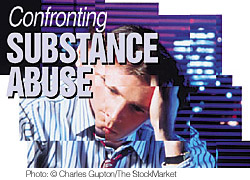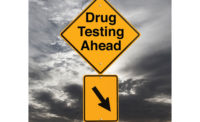
Ready to launch a drug and alcohol testing program? Or maybe you’re changing your existing policies. Be prepared for reactions like these:
“The company is infringing on my personal rights.”
“What I do on my off time isn’t the company’s business.”
“I don’t use drugs or alcohol and have been an excellent worker for years. Why do I need to be drug tested?”
“How can you be sure the tests are good? I heard poppy seeds even cause problems.”
I’ve had experience with two drug testing implementations in my working career. At a 45-employee plastics plant, we lost seven of our 16 process operators after giving the employees 60-day notice that drug testing was going to take place. And at a 700-employee chemical plant, we sent four hourly employees to a drug rehabilitation program and one superintendent resigned rather than go to rehab.
Many reasons exist for drug testing. In some industries it’s mandatory. Studies show that testing programs can increase safety and productivity, and reduce absenteeism and workers’ comp costs. Most companies today have initiated some form of testing. But if you’re starting from scratch, or perhaps changing your testing policies, it’s important to think through how employees will react, and some of the “real world” consequences.
Types of testing
Here are several common approaches:Pre-employment screening: One of the most popular programs, this type of testing screens prospective employees before they are hired. It’s easy to administer since it’s just one part of a total pre-employment physical.
Annual physical tests: Testing employees for alcohol and other drug use as part of their annual physical is also easy to administer, and is usually acceptable to employees. But you can get into a situation where a good employee with a great work history is being drug-tested for no apparent reason.
For-cause testing: This method is typically used when someone has been involved in an incident or when an employee shows obvious signs of being unfit for duty.
Random testing: Similar to drawing names from a hat, this controversial approach requires testing employees at unpredictable times.
What’s the effect?
It’s hard to document the impact of drug testing on incident rates and productivity, for example, but I think testing reduces the amount of drugs and alcohol used by employees. In some cases, though, I think it only changes a user’s tactics.Let’s examine a few possible scenarios when “Acme Welding” announces this kind of policy: Employees are told a drug testing program will commence in 60 days, with all employees tested during the first week. Random tests will be performed thereafter, and drug tests will be included during annual physicals.
Joe smokes marijuana a couple of times a week and uses cocaine almost every weekend. Do you think Joe will suddenly stop using drugs? Probably not.
Most likely he’ll clean up for the first round of tests and will do some research to see how long the drugs will stay in his system. He might even switch to alcohol for a while. Another option might be prescription drugs. If he can find the right doctor to prescribe his drug of choice, he can always supplement his habit from other sources. Joe might even look around for a new job.
The company has made him work harder at his addiction, but it didn’t get Joe to quit using drugs. Of course they might catch up to him some day, but the odds are that he will beat the system.
Robin, a model worker who participated in safety and quality programs at Acme welding, doesn’t use drugs or alcohol. When Acme announces the drug-testing program, Robin takes it personally and is distrustful of the new program. When she asks her supervisor about the program, he doesn’t know much about it, but says that if she doesn’t like it, she could go find a job somewhere else. So, she did.
Sam quit using drugs a month before the initial testing and passed the test. He immediately started to use drugs again, and one night on the job, he ran over a co-worker’s foot with a lift truck. Sam was tested for cause and was terminated after testing positive for drug use.
These are just a few ways drug testing can affect your workforce. Keep in mind that I’ve focused on initial responses. After a program is in place a few years it usually becomes another part of normal business. No matter how you look at it, drug testing is often necessary, so you have an obligation to administer the program correctly. And as a few of my examples show, substance abuse education and counseling can be as important as detection in keeping your workplace safe and your employees healthy.
Sidebar: Employee perceptions Resistance might be overstated
By David J. Sarkus, MS, CSP Even if drug and alcohol testing makes good safety and economic sense, will it create bad relations with employees, especially in industries where it is not mandatory?
Boston University’s School of Public Health surveyed more than 6,000 employees regarding their feelings toward alcohol testing. Sixty-one percent of all employees supported pre-employment testing. And 81 percent supported testing after a safety incident. Support for testing was generally consistent among managers, supervisors, and the workers.
Another important finding: When employees perceived a high risk for injury, support for testing was more acceptable. Also, those surveyed were more supportive of testing when it was felt that potential alcohol users were not “pulling their weight” (apparently due to some form of alcohol abuse) and were compromising the productivity and amount of work that had to be completed by co-workers. It’s important to note that these overall findings are generally consistent with research related to illicit drug use.
Worker resistance to testing may be overstated and should not deter employers from taking a proactive stance. In fact, workers may welcome testing as a means to keep them healthier, safer, and more importantly, as a way to maintain positive working relationships throughout the workforce — a more productive workforce!
Sidebar: Benefits of testing
Drug testing can be a valuable tool if administered properly:- Prescreening for drugs reduces the hiring of people who could be problems.
- Habitual drug users, who are a hazard to the workplace, will not be able to avoid detection.
- Supervisors will have a good tool at their disposal to assure that a person is fit for duty.
- Public safety demands testing for certain occupations such as truck drivers, chemical plant workers, policemen, soldiers, and medical workers. We want these people clean and sober when they are doing their jobs.
— Bob Brown
Sidebar: Drug addiction & ADA
“Drug addiction is considered a disability under the Americans with Disabilities Act (ADA), but the rules do not concern current users or those who work under the influence of drugs,” says Dr. Desmond Ebanks, Medical Director for the Waterbury Clinic of Industrial Health Care in Connecticut. Since current illegal drug use is not protected under ADA, an employer can refuse to hire a person (if the company has a written policy against drugs in the workplace).However, ADA rules do apply to long-term employees who claim addiction. If an employee is found to be addicted to drugs, the employer must send the employee to treatment if the company has an employee assistance program.
Also, the employee must be offered their old job back (or an equivalent job) upon completion of the treatment program. But employers are only obligated to do this once. If the employee has a relapse, the company may fire the employee.
While the rules give employers some protection against drugs in the workplace, that protection depends upon whether the company has an existing anti-drug policy. “That’s why it is important to take proactive steps and have a written policy,” says Ebanks.
“The key to not running afoul of the ADA is to prepare ahead of time and make sure you have the written policies in place so that you can back up your actions.”
IHC is Connecticut’s largest provider for the prevention, treatment and rehabilitation of work-related injuries and
illnesses. For information call (888) WORK-IHC.
Sidebar: What about random testing?
If you’re going to administer a random drug testing program, it’s imperative that you make it 100-percent random. As soon as the program zeroes in on certain individuals, your credibility will be shot.For example, a few years ago my son had shoulder-length hair and was working for a major chemical plant that had a “random” drug-testing program. He was called in for a drug test every couple of months — much more often than his co-workers. And when he arrived in the medical office, all of the other employees being tested also had shoulder-length hair. He said it was almost comical, sitting there with five or six other long-haired employees and then being told that the drug-testing program was random.
If you aren’t going to support a truly random program, try a different approach. If you’re interested in random tests, computer programs are available that will randomly select names from the employee roster. In some cases, though, a person may not be tested for extended periods, or they may be tested two days in a row.
— Bob Brown

